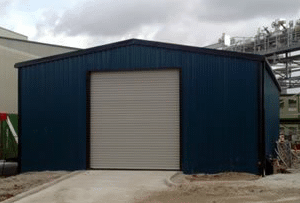Home>>> Building Codes
Building Codes and Design Loads
Why we ask for your Zip Code
We use this data for two reasons: 1) This allows us to accurately
determine the distance between your location and our nearest shipping
point. 2) We use this data to estimate the building code and design
loads for your area. This is only an estimate. It is your responsibility
to contract your local building official to determine the exact loading
for your area. Some zip codes cover a wide area so the design loads may
very within a zip code.
location and our nearest shipping
point. 2) We use this data to estimate the building code and design
loads for your area. This is only an estimate. It is your responsibility
to contract your local building official to determine the exact loading
for your area. Some zip codes cover a wide area so the design loads may
very within a zip code.
Building Code
Building codes are intended to provide for the safe use of buildings and
structures under "normal" conditions. The code describes exactly how
each part of the building should be loaded and designed. These loads are
based on Snow load, Wind Speed, Seismic Coefficient (earthquake),
Collateral load and Exposure. These loads will be applied in various
"Design Combination" to determine the most critical loading. From these
combinations all member sizes and spacing will be determined.
Snow Load
In the northern US, design of a building to withstand snow loading is
critical. Snow loading is dependent on several factors. These factors
include roof slope, if the structure is heated, if the structure is
insulated, if the roof slope is slippery or if it contains high friction
that will "hold" the snow on the roof. Our pricing system takes the most
conservative of these factors into consideration when designing your
building.
Wind Speed
As wind blows it places pressure on the building. The exact pressure is
based not only on the formulas and tables contained in the specific
building code chosen, but also the size and shape of your new building.
By entering the Wind Speed, our pricing systems will give the optimum
member sizes and their spacing.
Seismic Coefficient
This is the influence of earthquake activity on your steel building. The
higher this number the more influence seismic has or the greater the
seismic loading. Some building codes such as the Uniform Building Code (UBC)
or the California Building Code (CBC) also use seismic zone. These also
influence seismic design; Zone 0 having the least influence and Zone 4
having the greatest.
Collateral Load
The collateral load is the loading on the building caused by additional
construction materials such as a false ceiling, sprinkler system,
lighting, Heating/Air-conditioning duct, etc. The following table is
recommended loadings for each type of collateral load.
Exposure
The characteristics of ground surface irregularities (natural topography
and vegetation as well as constructed features) for the site at which
the building is to be constructed.
Exposure A - Large city centers with at least 50% of the buildings
having a height in excess of 70 feet.
Exposure B - Urban and suburban areas, wooded areas, or other terrain
with numerous closely spaced obstructions having the size of
single-family dwellings or larger.
Exposure C - Open terrain with scattered obstructions.
Exposure D - Flat, unobstructed areas exposed to wind flowing over open
water (excluding shorelines in hurricane prone regions) for a distance
of at least 1 mile.
